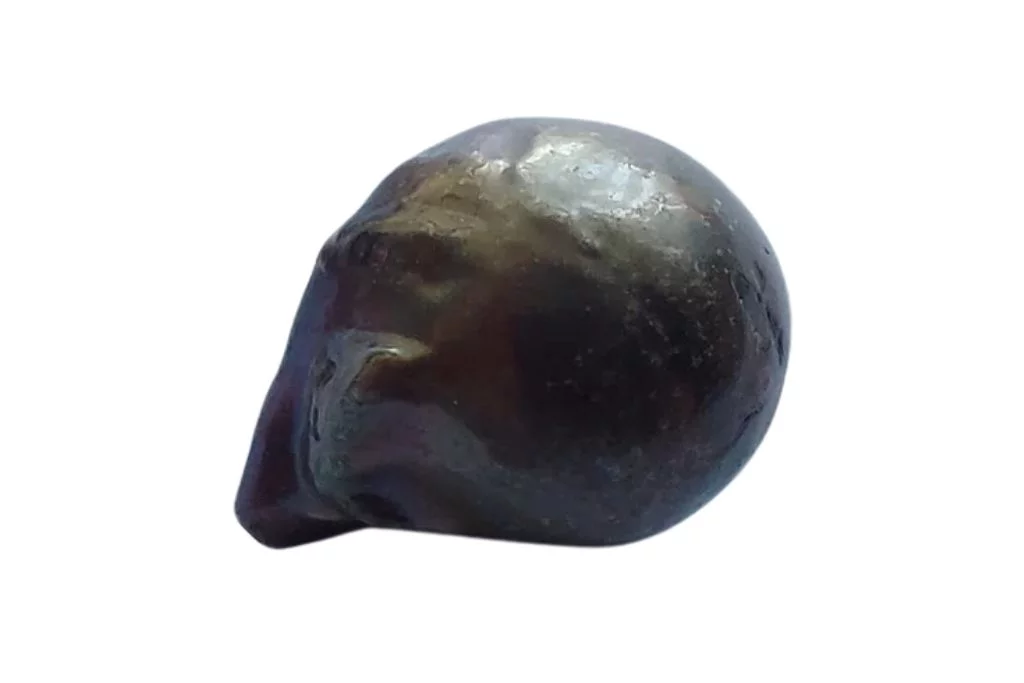Color and Appearance of Abalone Pearls
Abalone pearls are renowned for their striking iridescent colors, which can range from soft pastels to vibrant, metallic hues. These pearls typically display a mesmerizing play of colors, including shades of blue, green, purple, and pink, often with a silvery or golden overtone. The unique color combinations are a result of light reflecting off the pearl’s intricate layered structure, creating a captivating optical effect known as orient.
Structure and Composition
Unlike traditional pearls formed by oysters, abalone pearls are produced by sea snails of the Haliotis genus. They are composed of nacre, a crystalline substance made primarily of aragonite (calcium carbonate) and conchiolin (an organic protein). The nacre is deposited in extremely thin, concentric layers around a central nucleus, resulting in a distinctive structure that contributes to the pearl’s unique appearance.
Shape and Size
Abalone pearls are typically non-spherical, often exhibiting baroque or irregular shapes. This irregularity adds to their charm and uniqueness, with each pearl possessing its own distinct form. In terms of size, these pearls can range from tiny 2-3mm specimens to rare, larger examples exceeding 15mm in diameter.
Surface Characteristics
The surface of abalone pearls is generally smooth and lustrous, although some may display subtle ridges or patterns that reflect the natural growth process within the mollusk. This texture, combined with the pearl’s iridescent qualities, creates a captivating interplay of light and color that seems to shift and change as the pearl is moved.
Rarity and Unique Features
Abalone pearls are exceptionally rare, occurring naturally in only about one in every 50,000 wild abalones. This scarcity, combined with their extraordinary colors and patterns, makes them highly prized among pearl enthusiasts and collectors. Some abalone pearls may also exhibit a cat’s eye effect, a phenomenon where a band of light appears to move across the surface of the pearl when it is rotated, further enhancing their allure and value.
Historical and Cultural Significance of Abalone Pearl
Abalone pearls have been prized for centuries in various cultures, particularly in coastal regions where abalone shells are found. Native American tribes along the Pacific coast used abalone shells and pearls in jewelry, ceremonies, and as trade items. In ancient China and Japan, abalone pearls were considered symbols of wealth and status, often reserved for royalty and nobility.
Metaphysical Associations
In spiritual and metaphysical practices, abalone pearls are believed to possess powerful energies. They are often associated with the element of water and are thought to promote emotional balance and inner peace. Many practitioners claim that abalone pearls can enhance intuition, stimulate psychic abilities, and facilitate communication with higher realms.
Common Uses and Benefits
Abalone pearls are primarily used in jewelry making, creating stunning pieces such as pendants, earrings, and rings. Their iridescent quality and unique colors make them highly sought after in the luxury jewelry market. Beyond aesthetics, abalone pearls are believed to offer various benefits to the wearer. They are said to promote harmony in relationships, boost self-confidence, and aid in stress relief.
Traditional and Modern Applications
Traditionally, abalone pearls were used in healing rituals by indigenous cultures. Today, they are incorporated into alternative healing practices such as crystal therapy and energy work. In modern holistic wellness, abalone pearls are used in meditation practices, placed on chakra points, or worn as talismans for protection and emotional healing. Some people use abalone pearl powder in skincare products, believing it to have rejuvenating properties for the skin.

